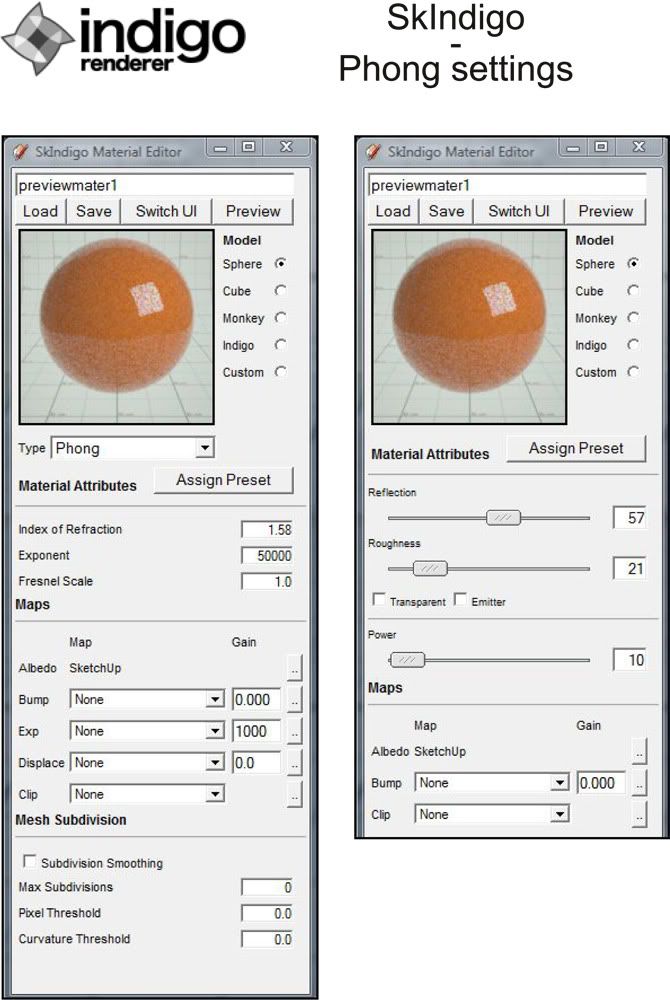I only played with IoR and Exponent settings, Fresnel and Power set to their default values.
Thumbnails might look small but they can be zoomed in as they were not re-sampled during pdf creation.
Oh, by the way, the previews were made from the Material Preview Scene, converted from .blend to .3DS, then imported into SketchUp. There might be some discrepancies from the official Preview Scene (in the texturing area).
Hope this helps (it helped me at least
Same for Glossy Transparent




